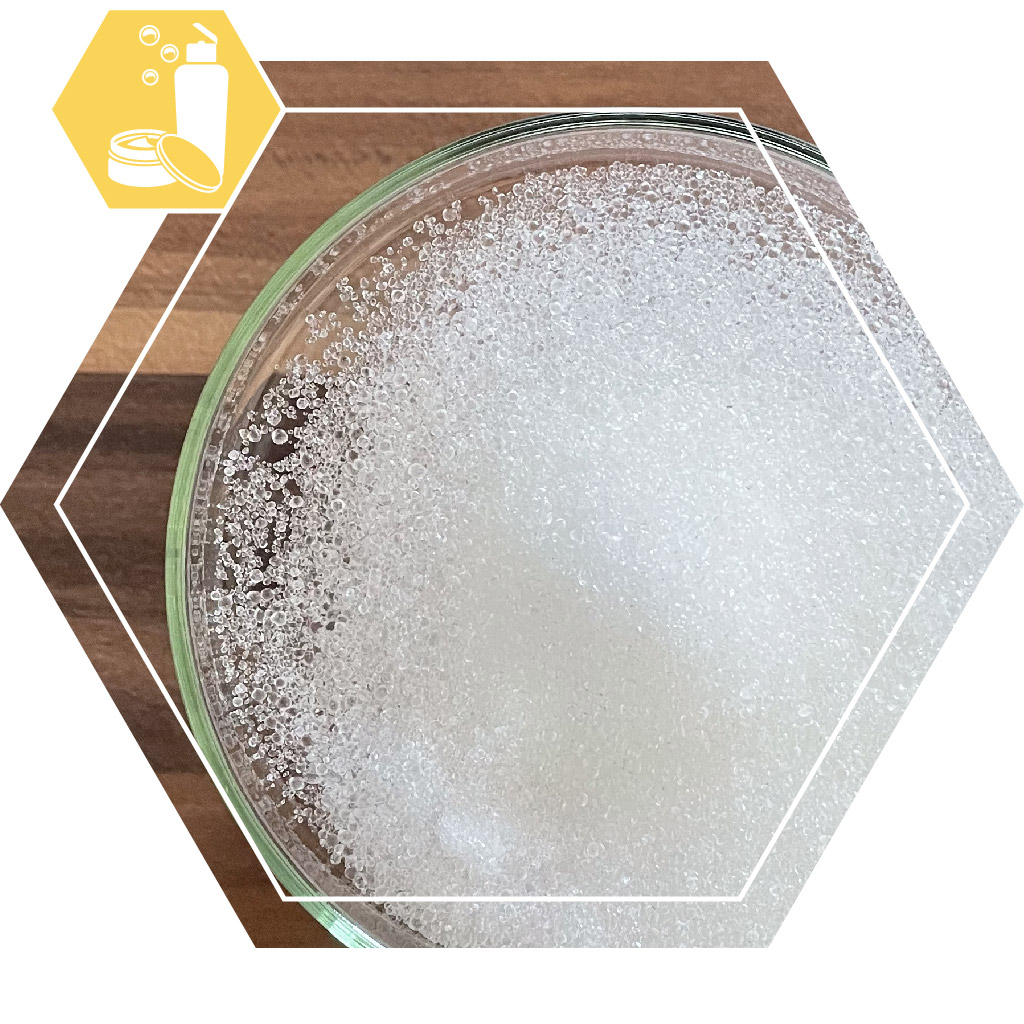Cosmetics raw material
Description
Alum is a cosmetic ingredient, but can also be used for colouring hydrangeas or tanning leather, for example.
Alum in cosmetics
In cosmetics, alum is used as astringent. In this form, dissolved in water, it is used in lotions, especially for oily skin.
Nowadays, the use of alum as a deodorant and antiperspirant is on the rise again. Although it is less mild than the deodorant aluminum chlorohydrate, it works fine. It inhibits sweating because it forms plugs in the pores, so that they are partially closed. In addition, it lowers the pH (acidity), at a low pH, microorganisms can grow less easily. Fewer microorganisms means less unpleasant odour. For use as a deodorant, the powder is pressed into spheres, "crystals" or other form, or dissolved in water.
In the form of sticks and chunks, it is used for treating wounds after shaving.
Hydrangea
Alum can be used to colour hydrangeas blue. The colour of the hydrangea depends on the pH ("acidity") of the soil. Alum changes the pH and ensures that the colour changes from red to blue. The exact dosage depends on the pH of the soil and to a lesser extent on watering and other matters. It is therefore always a matter of trying out how much is needed. In general, about 50-150 grams per bush per year is needed. Traditionally, you sprinkle this under the hydrangea at the end of August, but in principle you can do it all year round.
Other uses
When tanning leather, alum can be used as a tanning agent: it hardens the protein substances in the leather, making the leather harder and more durable.
It is a widely used mordant when dyeing wool and silk. The soluble dye from, for example, madder or kite is fixed in the animal fibres. It is recommended to use a proven recipe for this.
A well-known experiment is growing alum crystals in a saturated alum solution.
To our surprise, we have been asked several times whether our alum is suitable for use in food. Alum is not allowed in the EU as a food additive, so it is prohibited for professional use. We do not recommend private use in food. De Hekserij does not sell products that are intended for use in food or for other internal use. This product is NOT an exception.
Properties
Alum is an aluminum compound. It consists of the double salt of aluminum sulfate and potassium sulfate and contains crystal water. It occurs here and there in nature, but is usually prepared industrially. Crude natural alum can contain skin-unfriendly pollution and is therefore not suitable for use in cosmetics. The product we supply is therefore synthetically prepared from mineral substances.
There is sometimes some confusion about the name. In Europe, including the Netherlands and Belgium, 'alum' normally refers to aluminum potassium sulfate 12 hydrate, also referred to as potassium aluminum sulfate dodecahydrate. In other parts of the world it can mean aluminum ammonium sulfate, or the anhydrous salt. In addition, the name "alum" is also used as a name for a group of chemically related substances, such as chrome alum and other alums.
By alum we mean the usual substance in Europe: hydrous potassium aluminum sulphate.
We supply alum in the form of a coarse crystal powder, here and there in the form of chunks.
Hazards
Current legislation (REACH / CLP) does not classify alum as we sell it as a hazardous substance. Nevertheless, the substance can be dangerous if used incorrectly. We know of two cases in which a child got alum in their eye after or during an experiment, probably after rubbing their eyes. Just as with sand, sugar or salt, this can cause damage to the eye through sanding. For that reason, treat all substances, natural or synthetic, as potentially dangerous and keep them out of the reach of children.
Codes
Article number: 10621
EC number: 233-141-3 and 616-521-7
CAS number: 10043-67-1 and 7784-24-9
INCI: POTASSIUM ALUM




